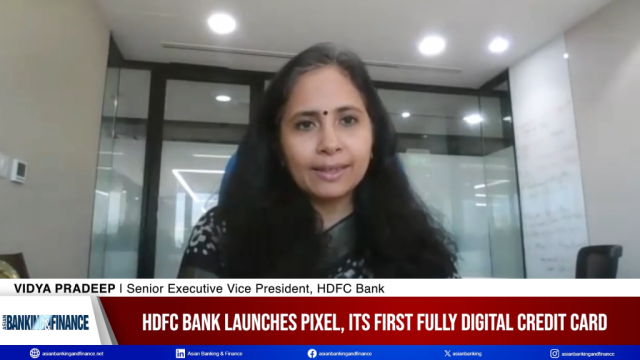
Citi, Krungsri, OCBC, TEB, and United Amara Bank reveal their digital strategies in Asia
Is digital banking about to replace the branch experience?
When Citi checked the amount of customer traffic in its physical branches across Asia Pacific over the last five years, data showed a decline by half. It would have been an alarming drop if not for an offsetting trend: Digital transactions doubled over the same period.
In Asia alone, Citi draws some 20 million visits to its online properties every month and 95% of all transactions already happen outside a branch. Felimy Greene, managing director and regional head of customer franchise in Asia Pacific and EMEA at Citi, notes that one out of every five new credit card accounts acquired comes from digital sources and over 50% of clients are actively using digital banking channels – up from 30% three years ago.
“We passed 8m users for the first time in March 2014 and we are targeting 10 million active digital customers within next two years. Citi was the first bank to offer 7 years of online statement history free of charge to all customers and today over half of our clients now receive monthly electronic statements,” says Greene.
Customer activity in Citi and other banks has been shifting sharply towards digital channels and has convinced some banks to close some physical branches to cut down costs. But analysts insist this does not spell doom for physical branches, which remain critical in the digital age as a nexus for building trust, assisting more complex transactions and bank servicing in less developed countries. “Digital banking is not completely replacing the branch experience, but rather supplementing it, while the nature of branch interactions is changing,” says Greene.
The extinction of physical branches is also hard to imagine in certain emerging markets like Thailand where Bank of Ayudhya (Krungsri) has observed that the volume of its branch transactions has not declined even amid an uptick in online transactions. This suggests that a rise in the latter does not necessitate a decline in the former.
“At Krungsri, we see online banking channels as complementary rather than substitution for bank branches,” says Thakorn Piyapan, head of Krungsri consumer group and head of digital banking and innovation at Bank of Ayudhya (Krungsri).
Piyapan explains that basic transactions are being redirected to online channels, which then frees up branch employees to focus more on advisory services on complex products, as well as other highly-specialized and personalised services.
Personalised customer experience is becoming a vital concern for banks, and they are turning to emerging financial technology (fintech) firms to gain an upper hand.
OCBC Bank, for example, launched The Open Vault, its own Fintech and innovation unit, which seeks to collaborate with fintech startups to create cutting-edge solutions.
Some of the concerns The Open Vault deals with are prototyping and deployment of new technologies, developing innovative commercial business models and solutions to bring to market relevant financial products and services, and enhancing banking processes, says Pranav Seth, head of e-business and business transformation at OCBC Bank.
The Open Vault teams up with startup fintech companies through its accelerator programme, and recently the collaboration has yielded superior customer knowledge and more robust robo advisory solutions.
For physical branches, wealth management is becoming a core service and the bank is also looking at making it available to a wider audience through the use of fintech-led applications.
Meanwhile for digital channels, the partnership with fintech firms has led to some breakthrough technologies in mobile and internet banking and resulted in notable gains for customers, says Seth. Two recent examples are the OCBC Pay Anyone micropayment service and the OCBC OneTouch biometric authentication for iPhone and Android devices.
“As we go along, we are seeing more and more companies outside the bank who also believe in innovating for the benefit of customers. These are companies that move very quickly to develop new innovations and solutions. We are actively looking out for these companies as we believe we can work with them to strategically do things faster,” says Seth of the bank’s fascination with fintech alliances.
“Innovation is difficult to create in a highly regulated and structured industry like banking. What we want is to strategically maintain that safety and trust our customers have in us, while becoming more nimble. We want to dedicate resources to manage these fintech developments that are happening outside the bank,” he adds.
Through the rise of Fintech companies and the proliferation of new digital technology, banks like the Turkish Economy Bank (TEB) can now deliver basic transactions in their online channels that they previously could only provide in physical branches.
“Now, almost all transactions and services that branches provide can be used through our internet and mobile branches as well,” says Gokhan Mendi, head of retail and private banking at TEB, citing 85% of comparable transactions is being done through its digital channels.
The Turkish bank currently has 900,000 active online banking customers and boasts a penetration rate of 36%. Part of its efforts to encourage the use of digital channels is to employ simple language with minimal banking jargon, customer freedom to personalize their menus, and video and web chat services to provide the “human touch” that previously was a cornerstone of physical branches.
The limitations of digital
While digital technology is beginning to change the banking landscape in many Asian countries, the adoption has been uneven in the region with nations like Myanmar still relying heavily on physical branches.
“In Myanmar, we have not reached that end of the evolution spectrum where spending on digital channels supersede the effort to open new branches,” says George Koshy, director of corporate strategy at United Amara Bank. He recounts the Myanmar banking crisis in 2002, which he says continues to affect the trust levels of the population on the banking sector. “Basic banking is required and physical branches are important to bridge the trust gap and draw customers to open accounts in the Bank,” adds Koshy.
Even though the technology is available, digital transactions such as e-pay services remain constricted by insufficient infrastructure and regulatory support.
“Applications for e-pay services are low given that the major electricity and water utility companies do not have the infrastructure and are not ready for digital payments,” says Koshy. “Major global credit card companies are also still in discussion with relevant parties on the regulatory barriers for card issuance for the domestic market, so whilst there may be demand on the consumer side, the other end is not ready yet.”
Financial inclusion
Traditionally, as seen in the case of Myanmar, physical branches are crucial to expanding the retail customer base of banks, but digital initiatives are making their case in reaching out more effectively to unbanked populations.
Piyapan cites the participation of Krungsri to the Thai national project called PromptPay Service, a payment and money transfer platform that makes it easier to conduct financial transactions. PromptPay is one of the key modules in the country’s e-payment project that encourages people to participate in digital financial transactions and include more unbanked populations to the formal banking sector. “We are embracing digital technology as part of our role in promoting financial inclusion,” says Piyapan.
Similarly, the TEB is tapping digital channels to reach young people and encourage them to better manage their financial transactions. TEB launched the TEB Junior program that teaches kids finance with games online, and part of their strategy is to make the online interface as easy to use as possible.























 Advertise
Advertise







